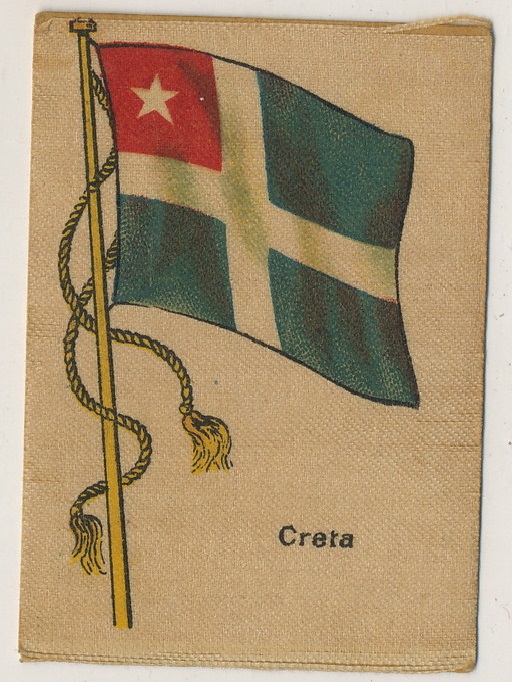The illustration shows the naval escort provided by the four Powers, France, Britain, Russia and Italy, to bring Prince George of Greece to take up his role as High Commissioner for Crete. Appointed only after diplomatic wrangling which went on for a considerable time after the decision to make Crete an Autonomous State under Ottoman suzeranity, his arrival on Crete in December 1898 was delayed further by arguments over his mode of transport and the flag he was to fly.
The original, Greek, proposal was that he be taken to Crete from Greece in a Greek warship, a suggestion which met with approval only from the Greeks. The next, Greek, proposal was that he be taken to the island in a civilian vessel flying a Greek flag; again only the Greeks found favour with this. Eventually he was told that he would be taken to Crete in a European warship escorted by other European warships, flying their respective flags; making the point to all concerned, including George, although later events would show he appeared incapable of getting the message, that his, George’s, appointment was made by the power and authority of the four Powers and no one else.
There was however, a last minute hitch when an argument broke out over the nature of the flag of the newly autonomous island. The symbolism of the flag eventually chosen referred to religious distribution of the population of the island; three quarters Christian represented as a blue field enfolded in a white cross, and one quarter Muslim, represented by a white star on a red field.
The initial proposal put forward by the Committee of four Admirals from the Powers who were effectively ruling the island prior to George’s arrival, possibly at the suggestion of the Russian Admiral, was that the flag would consist of a the same blue field, white cross and red upper left quarter BUT that instead of the Muslim star, there would be a further white cross.
The British Ambassadors in both Constantinople and St. Petersburg (Leningrad), raised objections to the proposal pointing out that it would be viewed by the Ottoman authorities and the Cretan Muslims as a provocation, since it could, and probably would, be interpreted as indicating Christian dominance of the Muslim population. The idea was dropped, although this ‘illegal’ version of the flag of the Cretan Autonomous State did still appear on the island on at least one occasion.









